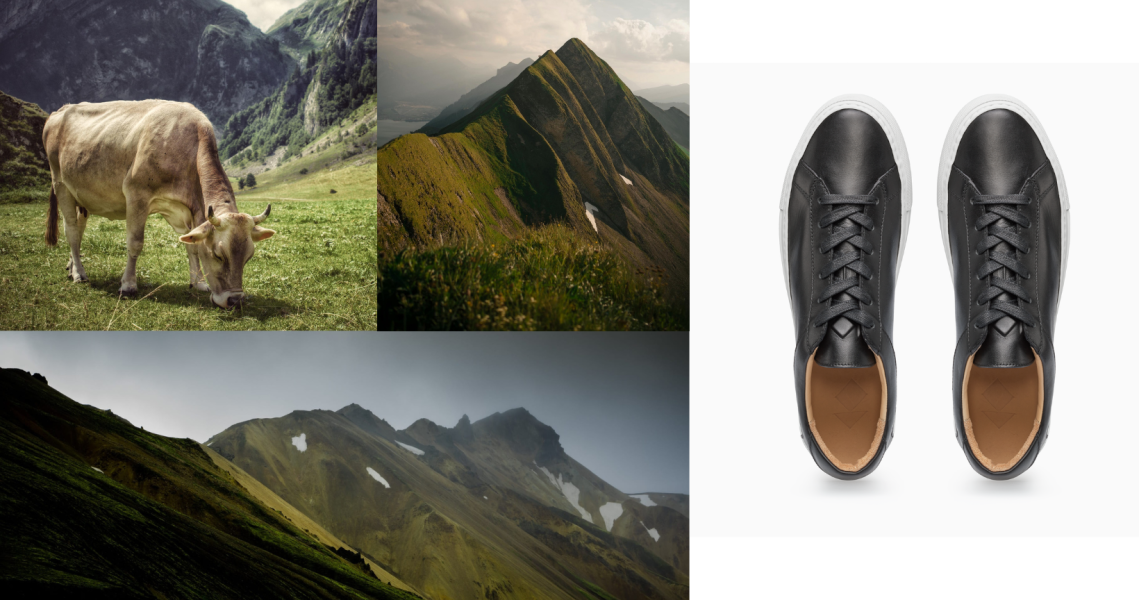Going deep into its supply chain brought Koio into the field of regenerative agriculture. Now it plans to become the first luxury sneaker brand to transition to a fully regenerative system, by 2025.
The idea of retrofitting a regenerative system into the operations of a luxury sneaker brand may seem impossible, but Koio is looking to prove its doable. As the sneaker industry has grown, with annual sales projections exceeding $95 billion by 2025, so too has consumer interest in circular fashion and sustainability. Typically, sneakers have one of the highest carbon footprints, accounting for 1.4% of global carbon emissions. That’s thanks to the multi-stage manufacturing process they require and their various components that are made of plastic. However, many sneakers still rely on natural materials like leather, too. As regenerative agriculture omits chemicals and returns nutrients to topsoil, products that play into a regenerative system actually better the earth.
But Koio is showing that traditional sneaker materials like leather and rubber can be both recyclable and biodegradable, if done in the right way. The brand pre-launched its debut regenerative shoe style, dubbed the Capri, on Thursday. “Nobody in the high-end footwear market has been able to [do this],” said Johannes Quodt, co-founder of Koio. “There’s a lot of talk around regenerative as the next big wave of sustainability. And many luxury companies like LVMH, Kering and Ralph Lauren are looking into regenerative farming, but nobody has been able to bring a product to market.” The brand will be releasing a full regenerative collection in April, featuring both men’s and women’s styles starting at $328.
Since Koio’s inception in 2015, its founders have been focused on leading with quality and artisan expertise to create an exceptional sneaker among DTC brands. Every pair of its shoes passes through the hands of 42 artisans before it’s deemed complete. In 2019, the brand closed a $9 million Series A funding round led by the Founders Fund. The venture capital fund had previously invested in SpaceX, Palantir, Airbnb, Stripe and Facebook.
The leather supply chains of fashion companies including Adidas and LVMH were recently linked to deforestation in the Amazon, via a report by grassroots environmental organization Stand.Earth. Almost 6.7 million hectares of Brazilian Amazonia forest was lost from 2011-2020, and deforestation caused by cattle ranching in the Amazon rainforest accounts for almost 2% of annual global CO2 emissions. Understanding and tracking each element of the supply chain, especially in exploitable fields like the leather industry, is paramount to advancing the system and moving toward widely-practiced regenerative farming standards.
With the launch of its regenerative Capri shoe, Koio is kicking off a plan to make all of its products regenerative by 2025. Research conducted by Rattan Lal, director of Ohio State University’s Carbon Management and Sequestration Center, showed that regenerative agriculture has the potential to sequester 10-15% of annual greenhouse gas emissions, rendering the entire agricultural industry carbon neutral. However, regenerative agriculture needs investment from industries that would benefit from its byproducts.
Much of the sneaker industry relies on animal hides from the agriculture industry for leather, and relying on regenerative agriculture would improve biodiversity and lower emissions, creating a regenerative system for leather production. Leather remains one of the most durable and adaptable materials available and is fully biodegradable, when not coated with petrochemicals that cannot be biodegraded. All of Koio shoes are handcrafted in Italy, maintaining the luxury quality of the brand. The new shoe’s regenerative leather comes from farms in the Alpine region of Surselva, Switzerland. The leather is vegetable-tanned in two colorways and certified organic by Bio Suisse, which monitors farming practices in Switzerland.
Ad position: web_incontent_pos1
The sneaker launch also highlights the need for a universal certification around regenerative farming, as other brands enter the space. “There’s a massive risk of greenwashing, as this topic of regenerative becomes bigger,” said Quodt. “Without regulation, there’s going to be a bending of standards, and some companies are going to jump on it and greenwash that phrase.”




